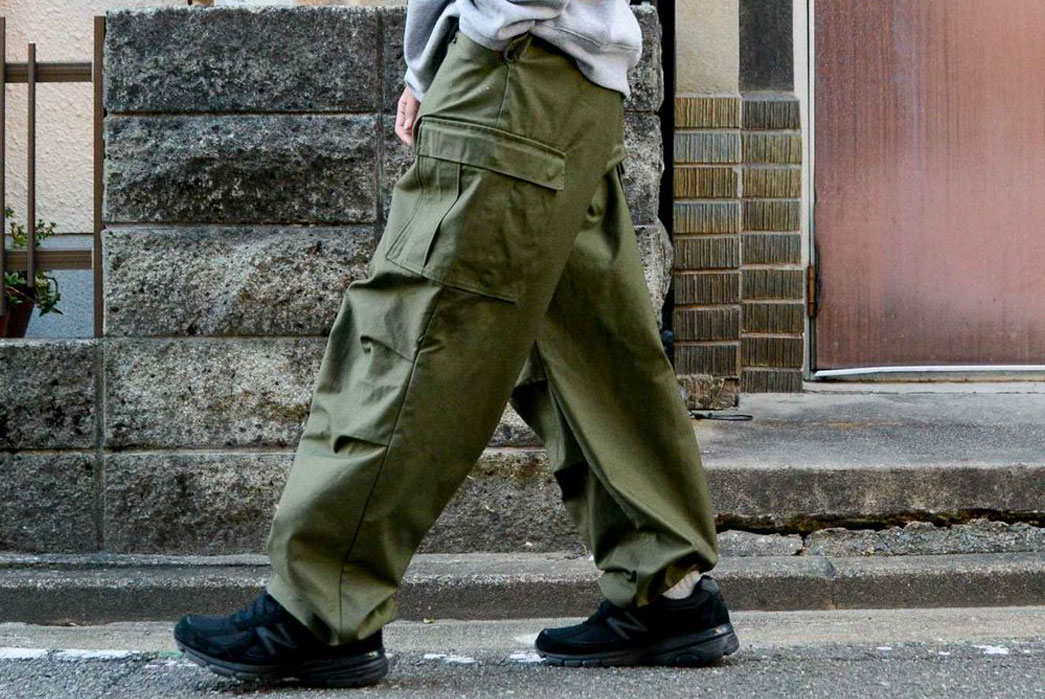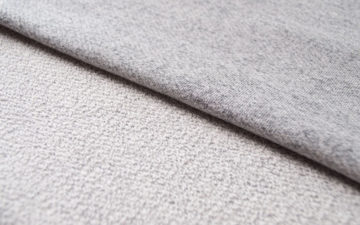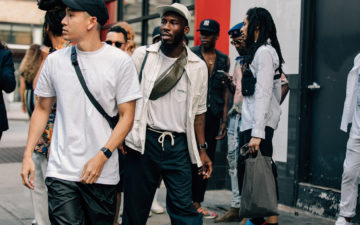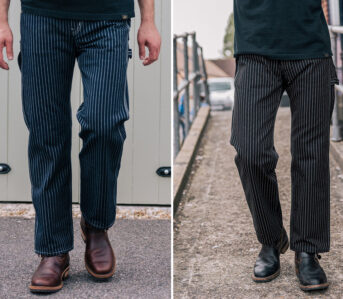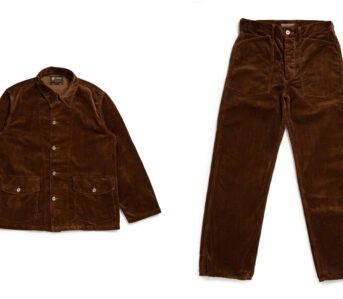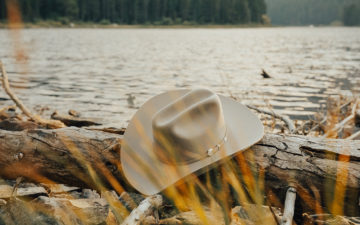Cargo pants can seem like the 5-pocket jean’s slightly dorky cousin. They’re a bit less talked about, they don’t fade and patina the same, and they don’t have the same cult following that raw denim has.
But I disagree. Olive green is more neutral and versatile than indigo. The wider, looser cargo silhouette is more generous and works with more body types and wardrobes. And plus, the options are more abundant. So here’s some well deserved attention on the humble cargo pants and how they came to store so many positive feelings.
Military Origins
Cargo pants, like many other things we love here at Heddels, originated as a utility focused, widely-issued (well, at least for military personnel) garment.
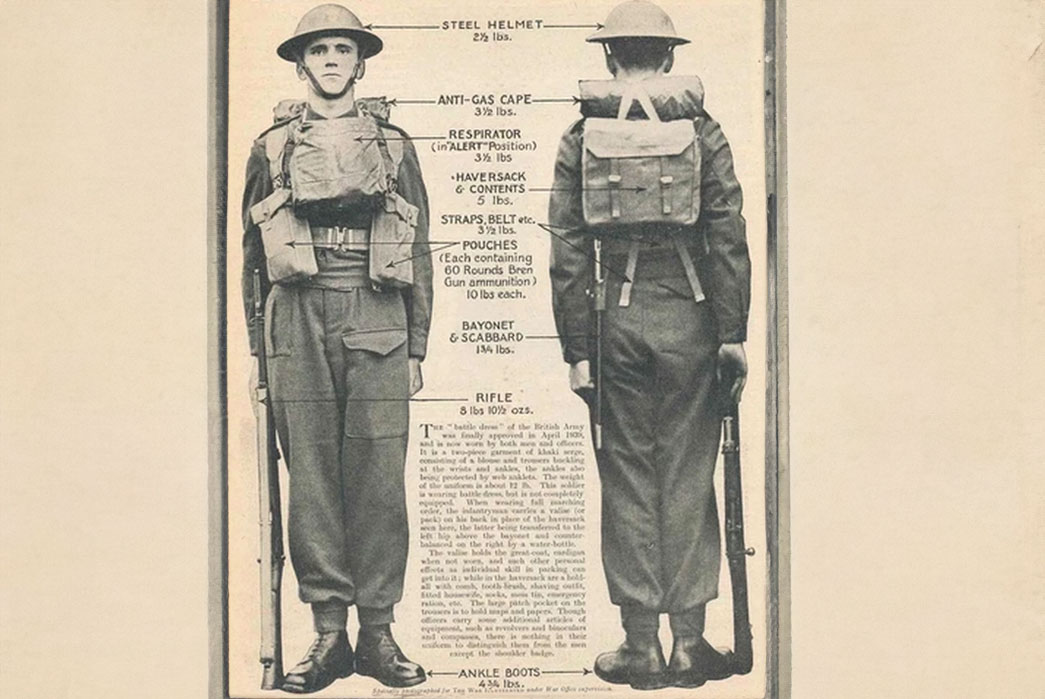
Image via The Military Times
In 1938, cargo pants made its debut in the British Battle Dress Uniform (BDU). The cargos marked the British BDU’s transition from formality-focused to practicality-focused garments. The olive green camouflaged soldiers into the background terrain while the looser silhouette provided a better ease of movement.
The large pockets were handy for carrying extra supplies, including ammunition and maps. A key feature of the original cargo pants is the two pocket design, having only pockets on the left thigh and the right hip. No back pockets were part of this design.
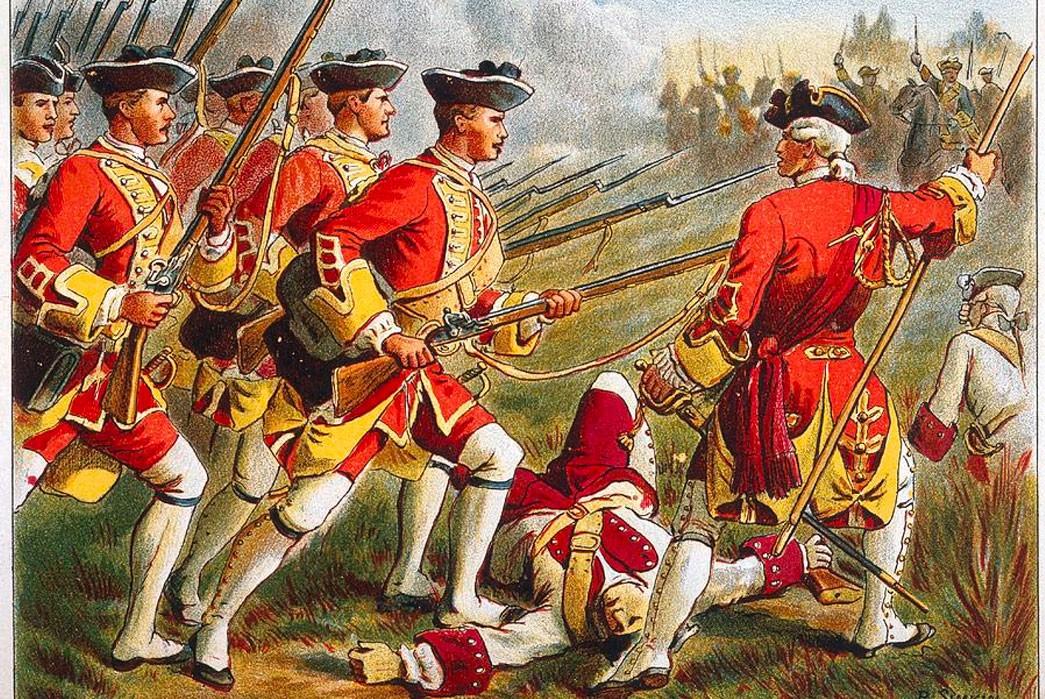
The British Red Coat uniform that marks a formality-focused era of British BDU, image via Fine Art America.
The Three Main Flavors
When cargo pants are mentioned today, three main designs come to mind. The M-47, M-51 and the M-65 iterations. The M-47 is the more elegant and simple of the trio, while the M-51 and M-65 are the more rugged and utilitarian options.
The M-47 iteration comes from the French military BDU introduced in 1947. Original M-47s are made from a rugged cotton herringbone twill. They have deep, chino-like slash pockets, cargo pockets on each leg and button tabs fitted just above the leg opening. The French based the M-47 on the US paratrooper trousers.
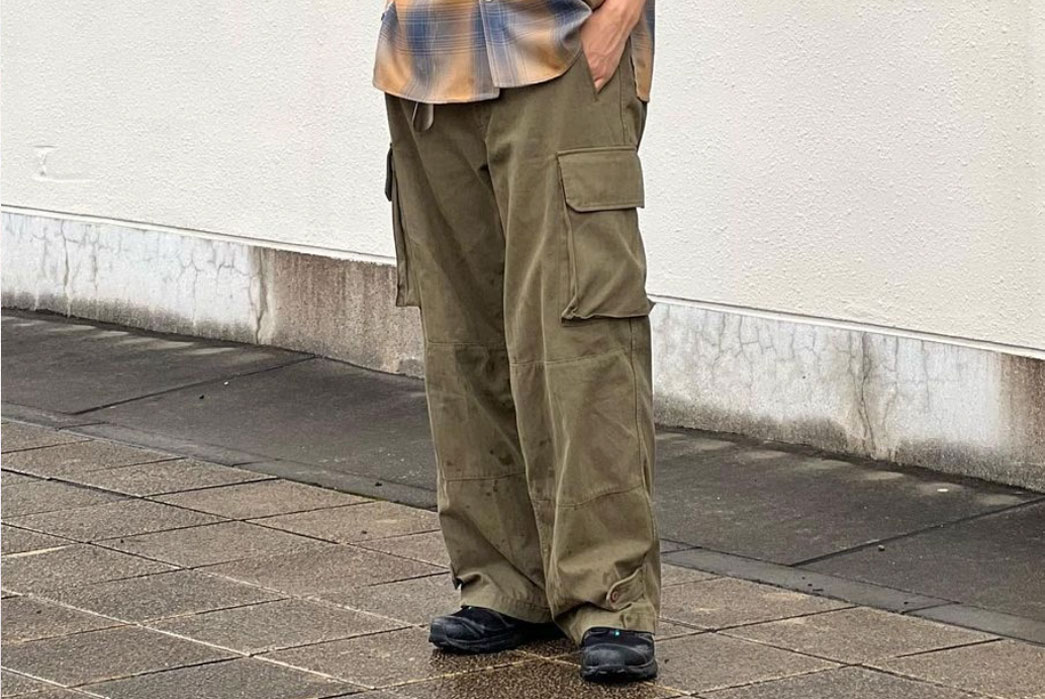
Image via @ken___archive on Instagram
Production of the M-47 spanned from the late 1940s and 50s (known as early era) until the 60’s (known as the late era). An easy way to identify the era of M-47s is with the waist button. Late era M-47s have two buttons while early era M-47s only have 1.
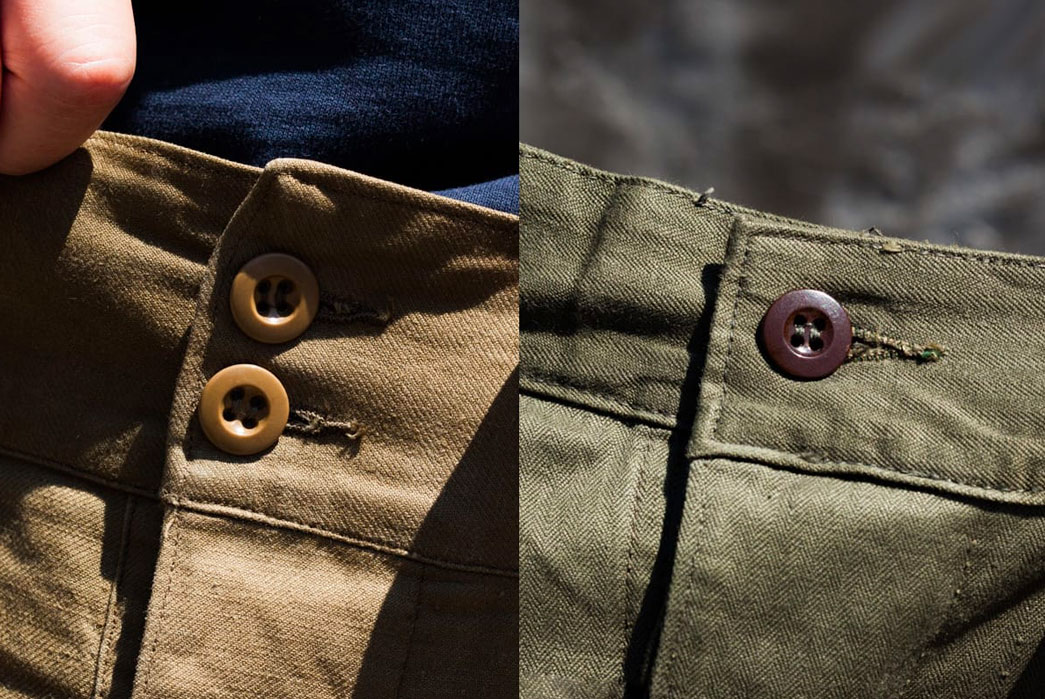
Image via slow-and-steady.com
The M-51 is the first cargo to have 6 pockets. Adopted by the US military in 1951 along with the M-51 field jacket, the trouser-jacket duo were designed for the extreme cold. Compared to the M-47, it has a looser, true straight fit. The M-51 has an adjustable waist drawcord on the side, and also a hem opening drawcord. Like the M-47, vintage M-51s are made from a cotton fabric with mostly double stitching.
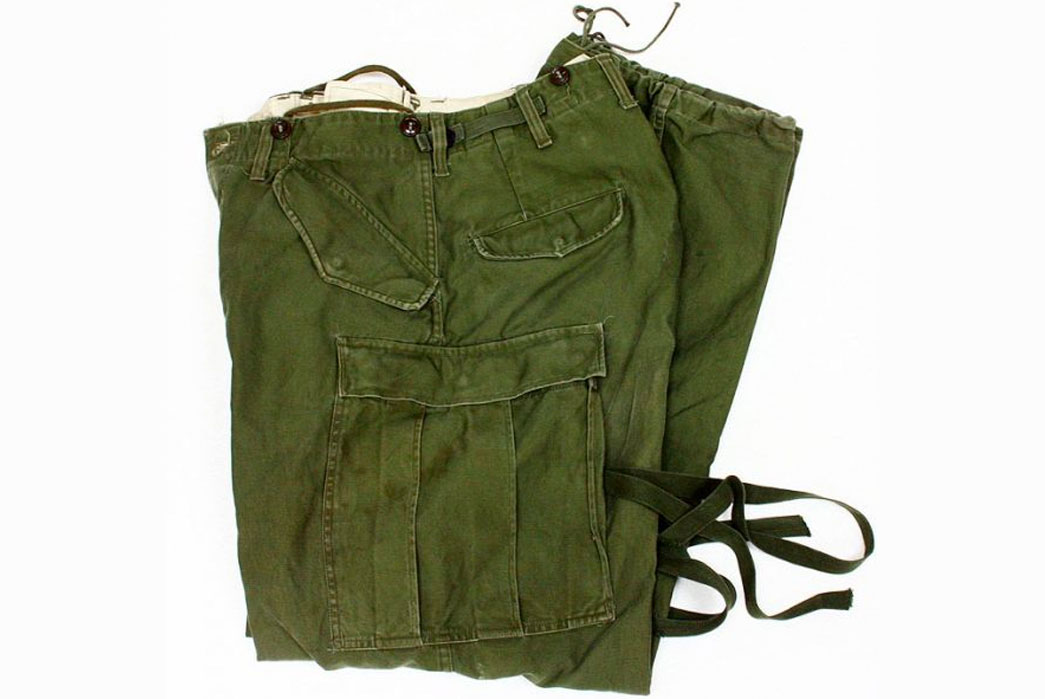
Image via knowessence.com
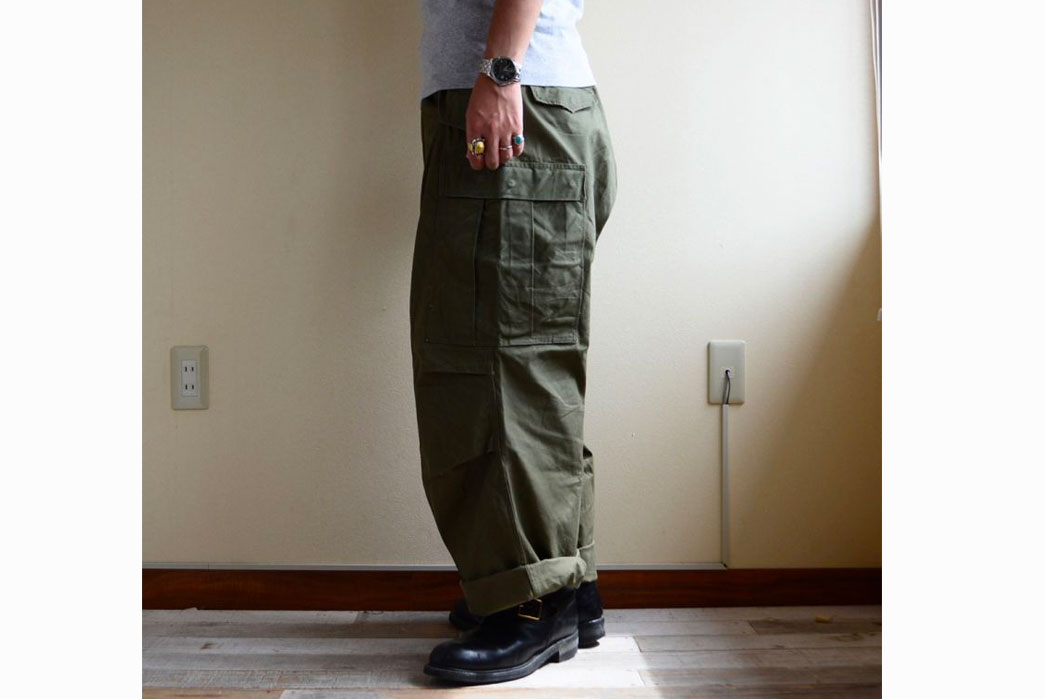
Image via hamburgcafe.jp
The M-65 is the successor of the M-51, named because (you guessed it) the US Army adopted it in 1965. Unlike the M-47 and the M-51, the M-65 is made from a full nylon fabric or nylon-cotton blend fabric. The M-51 and M-65 have very roomy fits throughout because it is designed to be able to fit a padded quilt liner as an “inner-trouser” during cold missions.
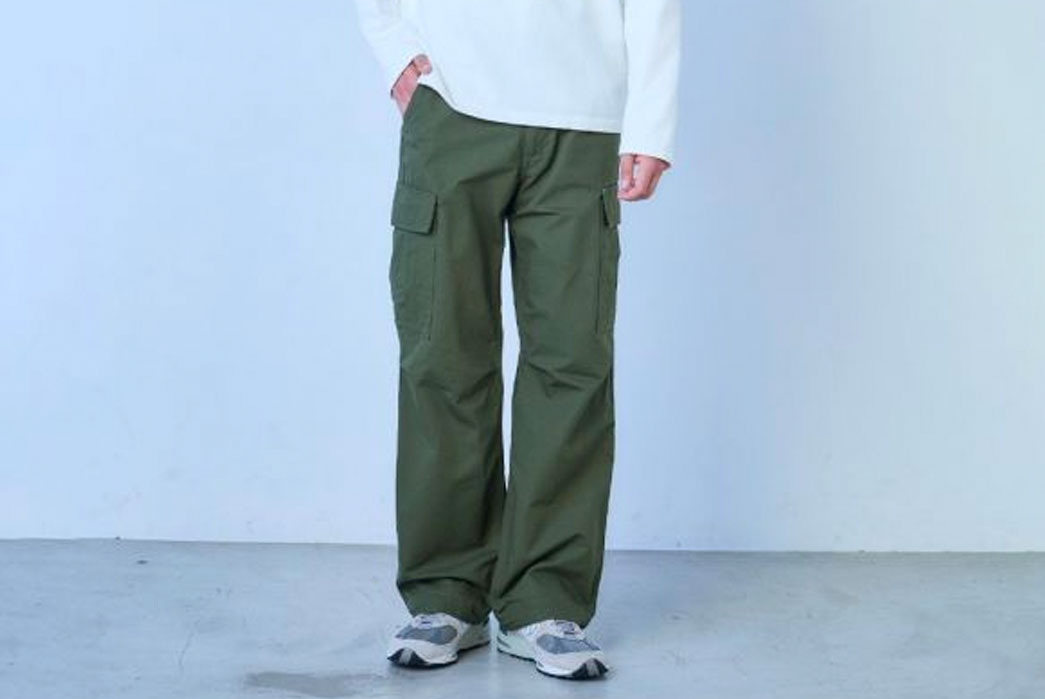
M-65 cargo reproduction. Image via Japan Blue Jeans
Popular Adaptation
While cargo pants were originally designed for the rugged and unpredictable battlefield. But fast forward to today, from the most meticulous vintage reproductions of M-47s to the buy-one-get-one-free Walmart cargos, the garment has now become a staple in the modern wardrobe.
Cargos gained popularity in the 90’s in hip hop, skate and other counter-culture circles. As the Iconic explains:
“Fast forward to the 1990s, and cargo pants started to become popular far, far away from military battlefields. Curiously dissected by fashion ateliers and lovingly adopted by skaters for the functionality, the perpetually-malleable cargo pants found a second, third and fourth life in diverse sartorial manifestations.
They’ve also proven hugely popular among America’s hip hop scene. Often manufactured with classic woodland camo, cargo pants helped emblazon the political lyricism of figures like Public Enemy’s Chuck D, Tupac Shakur and The Notorious B.I.G., as America became an urban war zone of sorts during the 1990s. In the following decade, rappers like Eminem, Soulja Boy, and Jay-Z extended the cultural legacy of cargo in hip hop, the style becoming even more big and bellowing as the years progressed.”
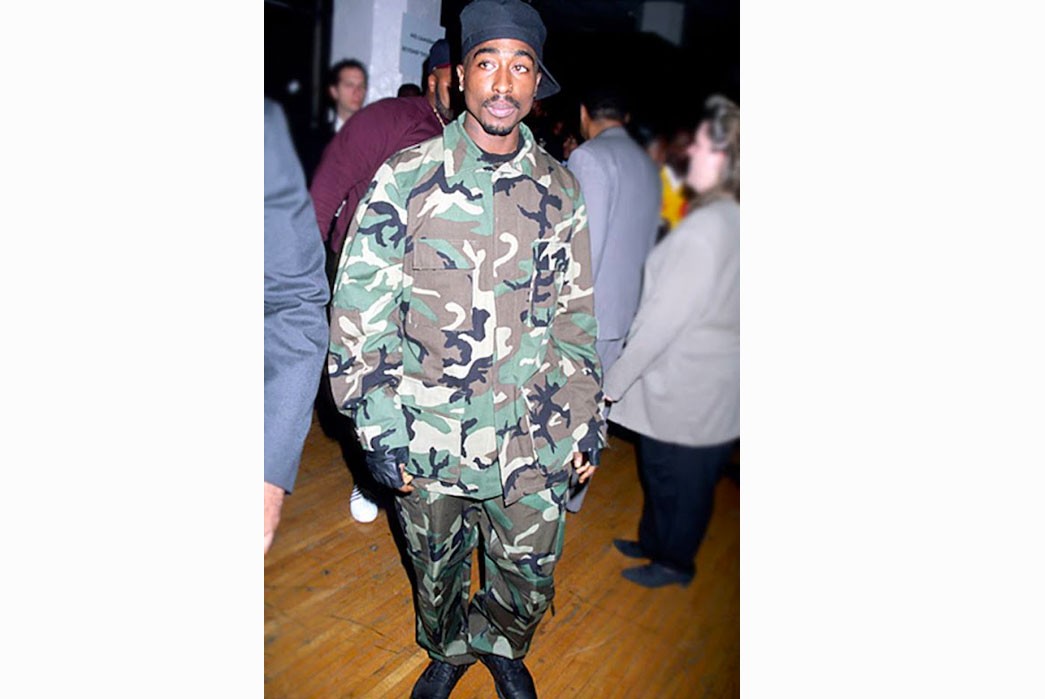
Tupac Shakur wearing a pair of camo-print cargos. Image via hiphopcloset.com
Cargos reached mainstream critical saturation in the US in the early 2000s, as brands like Abercrombie & Fitch flooded malls with zip-off repros of paratrooper pants. But the cargo pant has found a soft spot in the Japanese “Cityboy” look. The “Cityboy” look is a style pioneered by Japanese lifestyle and fashion magazine Popeye, whose slogan is “Magazine for City Boys.”
The term is vague, but the Cityboy look is loosely a blend of oversized American casual, Ivy style and European style garments. As Sabukaru notes, Popeye stylist (2012 – 2018) Akio Hasegawa is an influential figure in the City Boy genre. Whether its true vintage or modern reinterpretations, the cargo pants often find themselves woven into the “Cityboy” look.
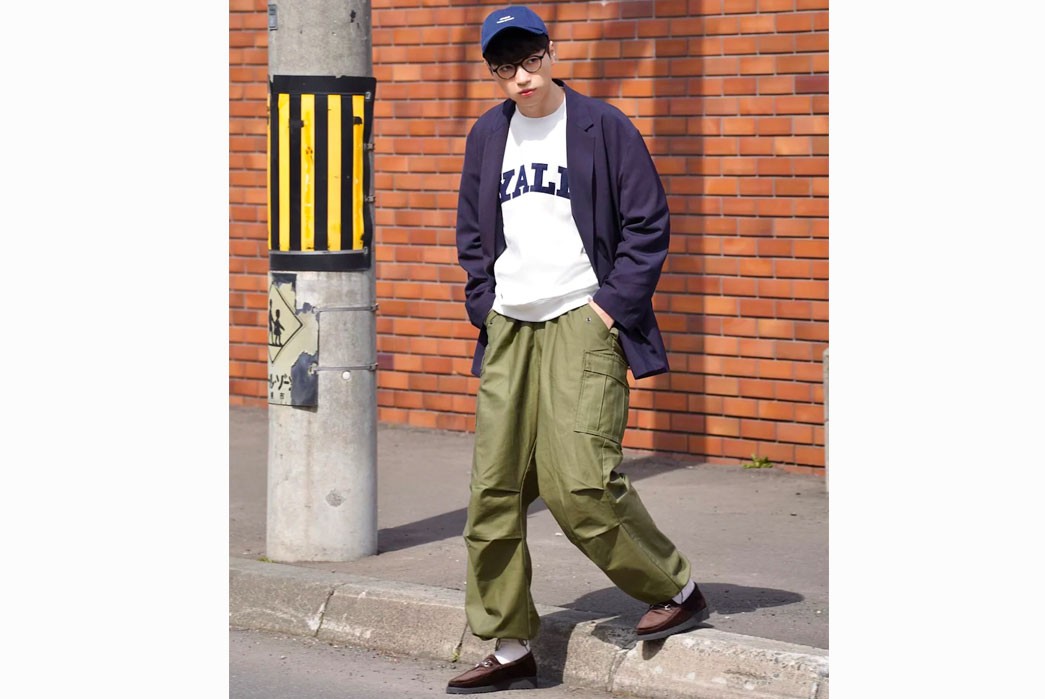
Image via @naruyuu on wear.jp
Sure, the Supreme cargos might sell out. The Buzz Rickson repros might need an initial deposit and mortgage plan. But don’t be phased, cargos are for the masses.
Military surplus stores are scattered around the US (sorry if you don’t live in the US. I don’t either). And if you dig around a little, you’re bound to find piles of deadstock cargos tucked around the back for some very reasonable prices. A bit dusty and wrinkled perhaps, but don’t be afraid to dog around and try them on. Open-mindedness (to finding surplus cargos) is the key to a happy life.
Fashion comes from an endless cycle of contextualization and appropriation. The early manufacturers of cargo pants were focused purely on a utilitarian purpose. Durability. Comfort. Camouflage. They could hardly imagine future interpretations of their trousers on a Supreme lookbook. Much to a purist’s dismay, I think there is a beauty in this never-ending application of new ideas onto the old.
